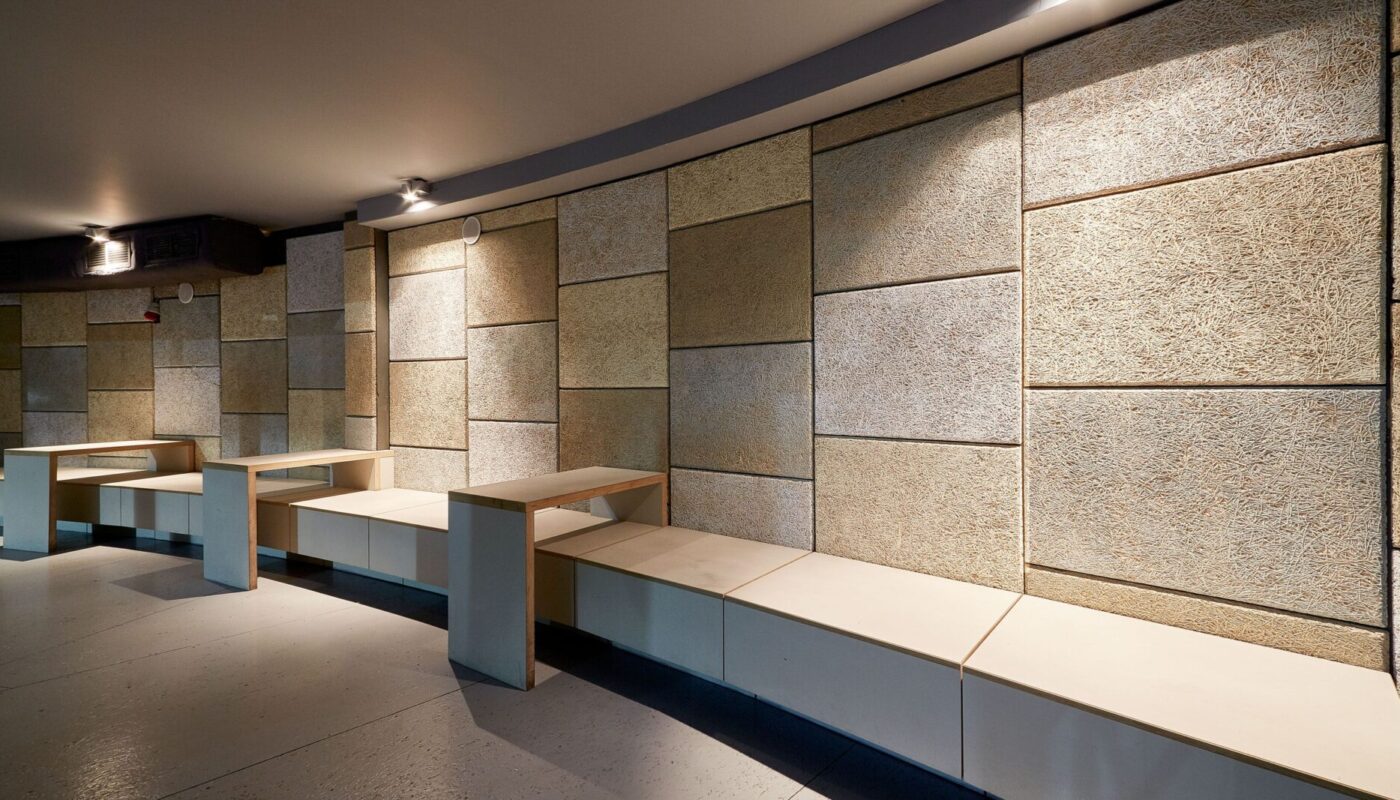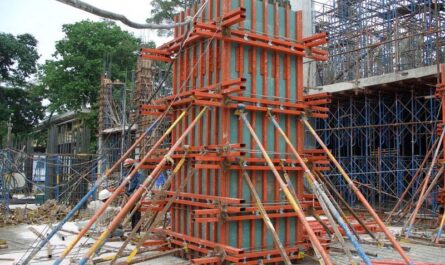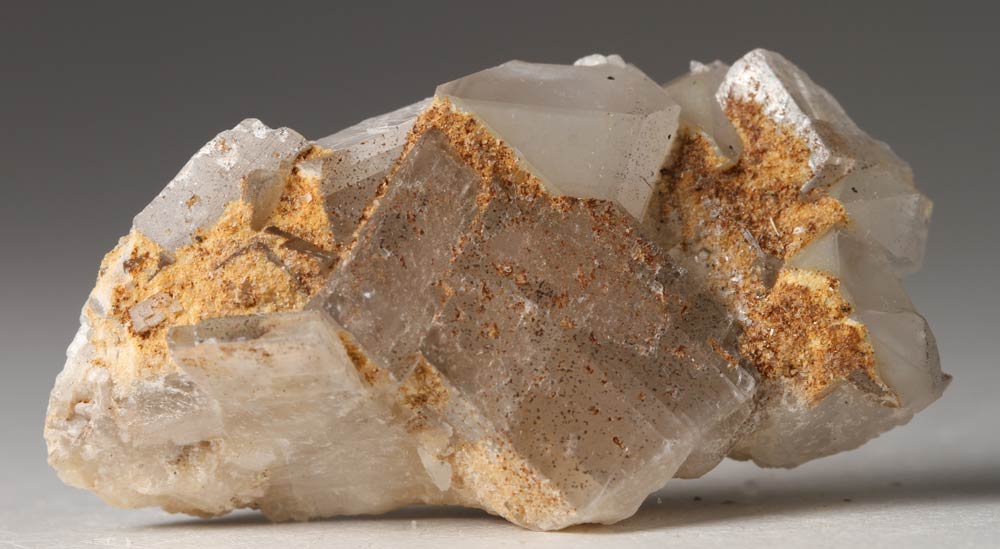Cement board, also known as fiber cement board, is a building material made of sand, cement and cellulose fibers. It is a durable and fire-resistant product commonly used for interior and exterior walls, floors, countertops, and trim applications.
History and Development
The first cement boards emerged in the late 1800s when manufacturers began experimenting with combining cement and wood fibers. Over time, the composition of cement board evolved with the addition of sand and cellulose fibers to improve workability and durability. Standard brands like HardieBacker and Durock gained popularity in the mid-20th century as a substrate for ceramic tile and as a substitute for drywall in moist environments. Today, cement board continues to be a viable and versatile building material option.
Physical Properties
Cement Board is a rigid panel that is denser and heavier than drywall. It measures approximately 1⁄2 inch thick and comes in standard panel sizes of 4 feet by 8 feet or 4 feet by 9 feet. The surface has a distinctive sandy texture that provides grip for adhesive bonding. Cement boards are moisture, mold and impact resistant as well as fireproof. They can withstand temperatures up to 1250 degrees Fahrenheit without shrinking, warping or losing structural integrity.
Applications in Construction
Due to its physical characteristics, cement board is well-suited for areas that experience humidity, moisture exposure or high heat. Common uses include bathroom and shower walls/floors/backsplashes, kitchen backsplashes and countertops, exterior siding, pool surrounds and shelving. It serves as an ideal substrate for ceramic, stone or porcelain tile installations as the moisture-resistant core helps prevent cracking and delamination. Cement board may also be used as a floor underlayment and ceiling panels in commercial projects like restaurants, hospitals and schools.
Comparison to Drywall and Wood-Based Substrates
Compared to regular gypsum drywall, cement board provides superior moisture resistance, durability and fireproofing abilities. While gypsum holds up to typical interior conditions, cement board withstands long-term moisture exposure better without deteriorating. Unlike wood-based substrates like plywood or hardboard, cement board will not swell, rot or weaken over time in damp areas. Its non-porous surface also rejects mold and mildew growth, making it an excellent choice for high-humidity zones. However, cement board is more brittle than drywall or wood panels and requires special handling during cutting and installation.
Installation and Cutting Techniques
Proper handling and installation is important with cement board due to its density. Because it is heavier and more rigid than drywall, special care must be taken when lifting, carrying and mounting panels overhead. Always use appropriate safety gear like gloves and eye protection. Cement board can be mounted using concreteboard screws or adhesives suitable for tile installation like mastic, thin-set mortar or construction adhesive. Power tools with masonry blades work best for making straight cuts while a dust mask is recommended due to silica dust. Score the panel surface with multiple passes and snap or use an abrasive wheel saw for curved cuts. Apply adhesive or thin-set to the back of cement board before setting tiles to create a monolithic unit. Gaps and seams between tiles should be filled in with suitable grout or caulk for moisture sealing.
Limitations and Disadvantages
Although resilient, cement board does have some limitations. It is brittle and can crack or chip if subjected to impact loads or point stresses during installation. Proper handling and secure fastening is necessary. While moisture-resistant, cement board will eventually degrade over many decades of constant saturated exposure from ground contact or roof leaks. Joint sealing is also critical to maintain waterproofing ability. It is denser and heavier than drywall, making installation more labor intensive. Additionally, due to the Portland cement content, working with cement board generates silica dust that requires adequate ventilation and breathing protection. However, when used as directed for its intended applications, cement board provides long-lasting performance as a waterproof cladding or substrate material indoors and out.
Closing Thoughts
As a versatile building panel with good moisture, mold and fire resistance qualities, cement board has become a standard choice for professional tile installation backing and in high-moisture areas like bathrooms, kitchens and exterior siding. While slightly more demanding to handle and cut than drywall, cement board tolerates humidity and wet exposure far better without degrading over time. For durable, fireproof surfaces that withstand moisture, cement board remains an excellent economical substrate choice. When handled, installed and sealed properly according to manufacturer specifications, it provides lasting performance as a waterproof cladding or substrate material both indoors and out.
*Note:
1. Source: Coherent Market Insights, Public sources, Desk research
2. We have leveraged AI tools to mine information and compile it




